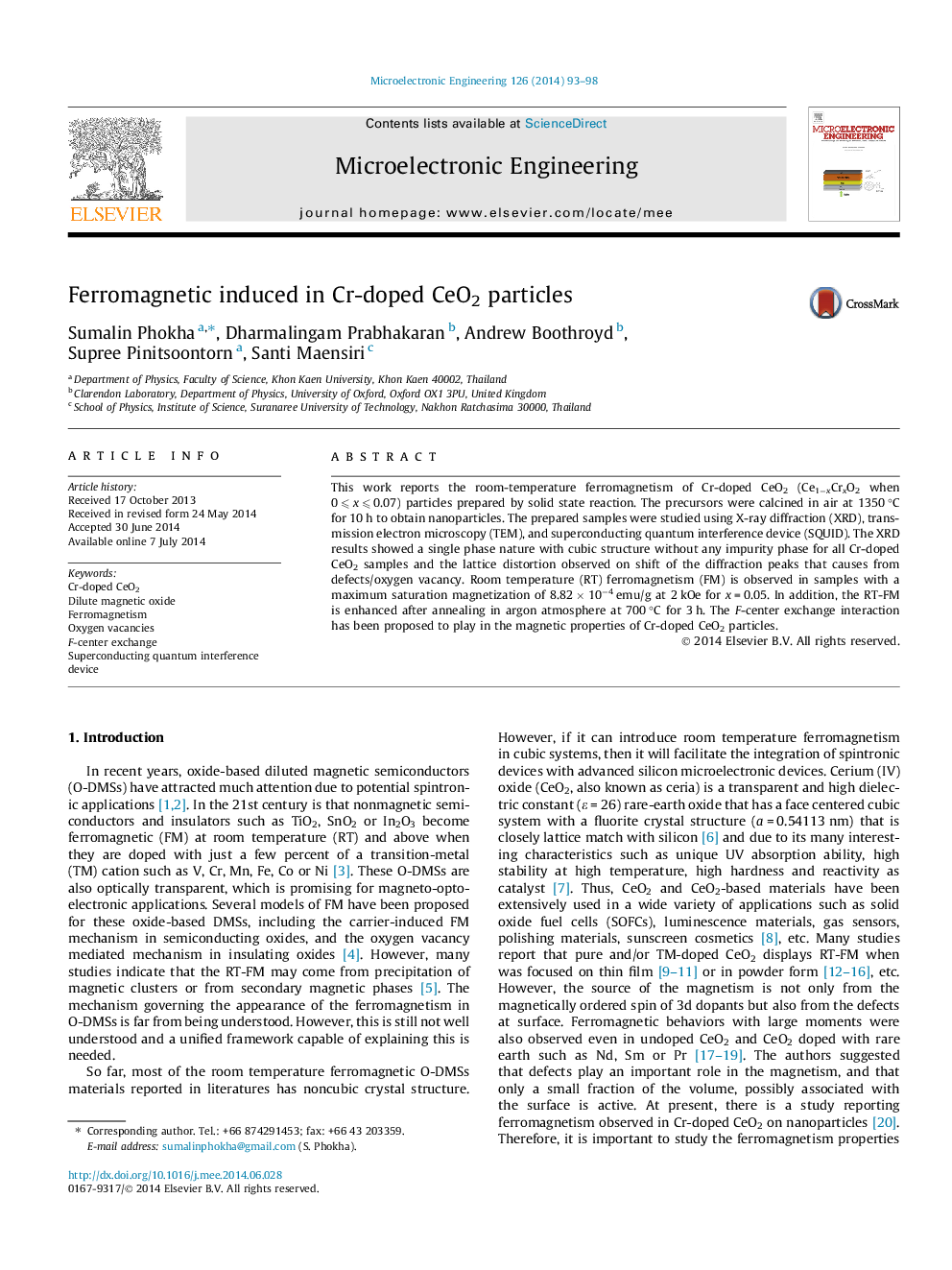| کد مقاله | کد نشریه | سال انتشار | مقاله انگلیسی | نسخه تمام متن |
|---|---|---|---|---|
| 539340 | 1450355 | 2014 | 6 صفحه PDF | دانلود رایگان |

• The pure phase of Cr-doped CeO2 particles have been successfully prepared by solid state reaction.
• The ferromagnetism (FM) at room temperature (RT) was observed in Cr-doped CeO2 particles.
• Oxygen vacancy defect played an important role in the magnetism of Cr-doped CeO2 particles.
• The lattice distortion observed on shift of the diffraction peaks that causes from oxygen vacancy.
• The RT-FM is enhanced after annealing in argon (Ar) atmosphere.
This work reports the room-temperature ferromagnetism of Cr-doped CeO2 (Ce1−xCrxO2 when 0 ⩽ x ⩽ 0.07) particles prepared by solid state reaction. The precursors were calcined in air at 1350 °C for 10 h to obtain nanoparticles. The prepared samples were studied using X-ray diffraction (XRD), transmission electron microscopy (TEM), and superconducting quantum interference device (SQUID). The XRD results showed a single phase nature with cubic structure without any impurity phase for all Cr-doped CeO2 samples and the lattice distortion observed on shift of the diffraction peaks that causes from defects/oxygen vacancy. Room temperature (RT) ferromagnetism (FM) is observed in samples with a maximum saturation magnetization of 8.82 × 10−4 emu/g at 2 kOe for x = 0.05. In addition, the RT-FM is enhanced after annealing in argon atmosphere at 700 °C for 3 h. The F-center exchange interaction has been proposed to play in the magnetic properties of Cr-doped CeO2 particles.
This figure shows the ferromagnetic curve and inset the zero-field cooling (ZFC) and field cooling (FC) curves of Ce0.95Cr0.05O2 particles prepared by solid state reaction. This result was indicated that the sample is an intrinsic ferromagnetism. The ZFC and FC curves showed smooth curves and no signal of secondary phase in the range of 2–350 K which conformed that magnetic behavior in our sample is not supported by magnetic impurities.Figure optionsDownload as PowerPoint slide
Journal: Microelectronic Engineering - Volume 126, 25 August 2014, Pages 93–98